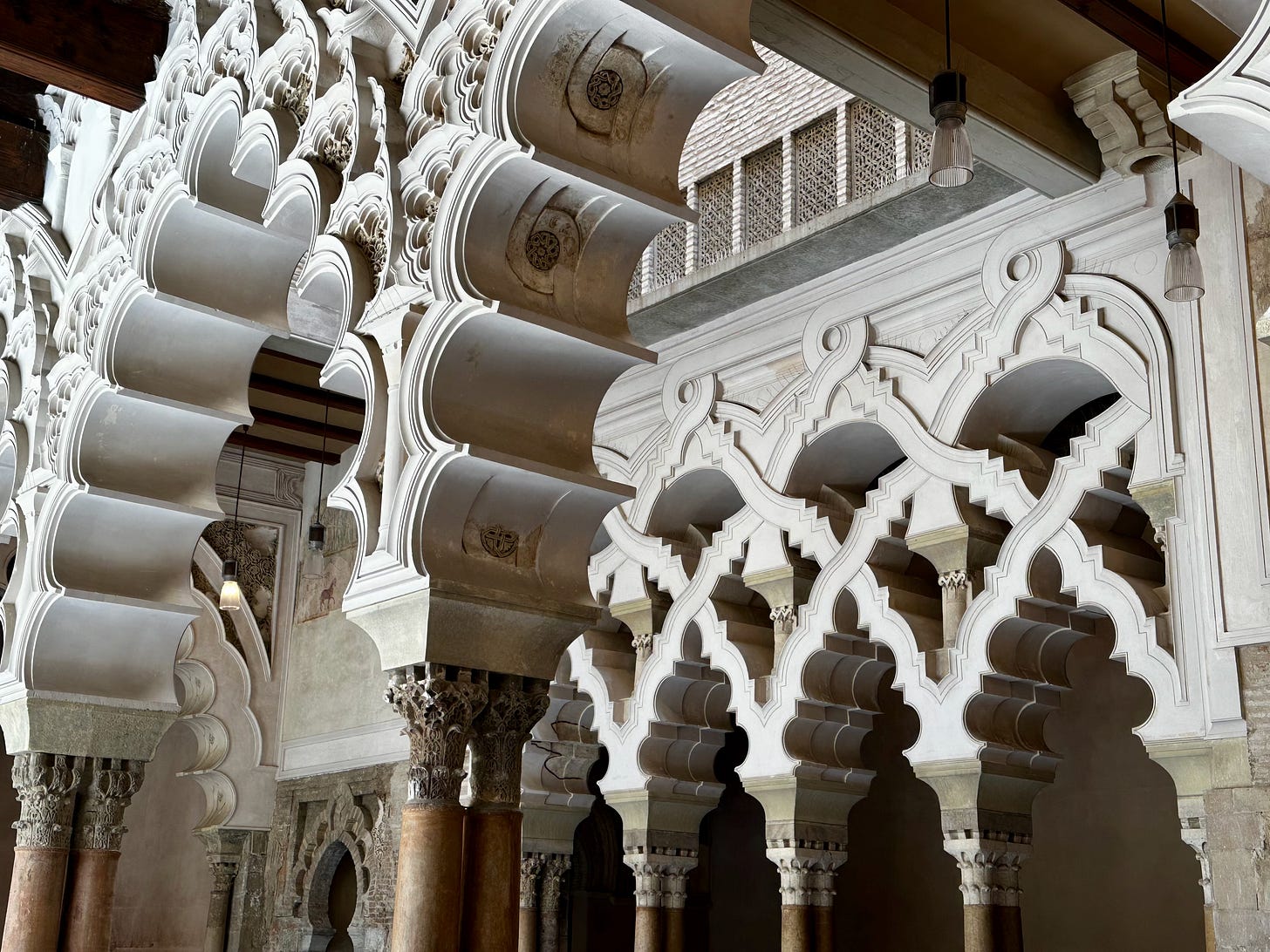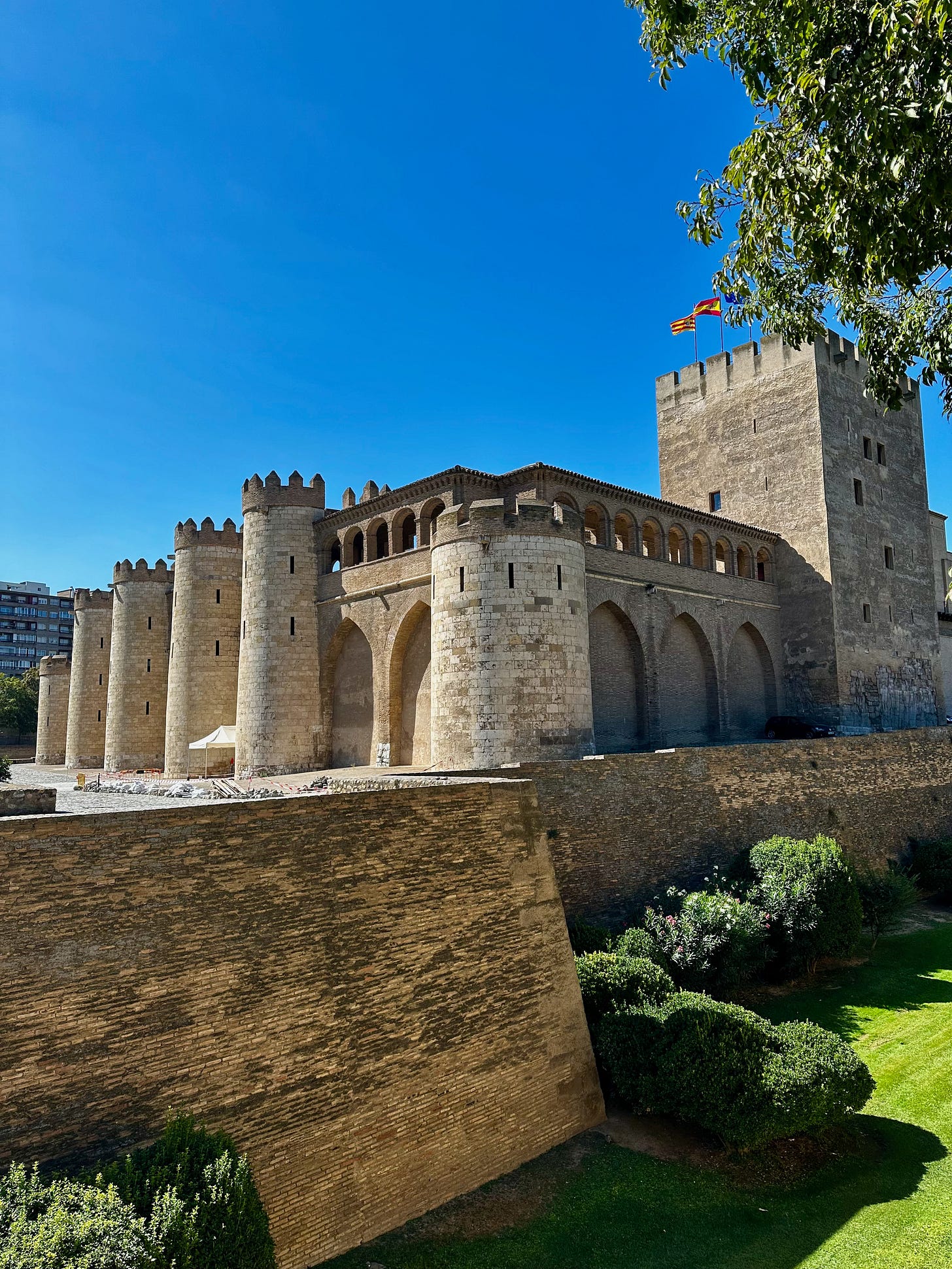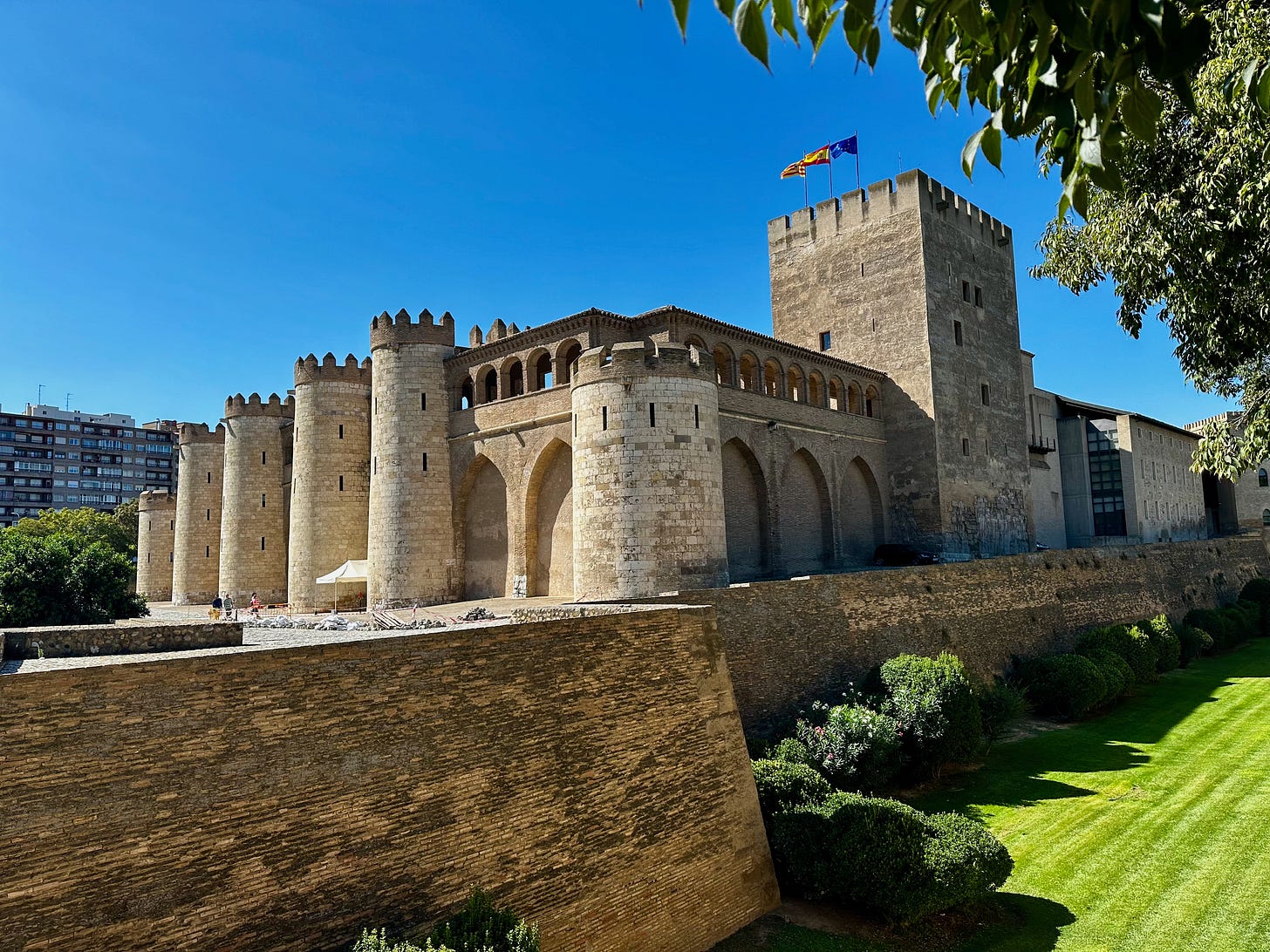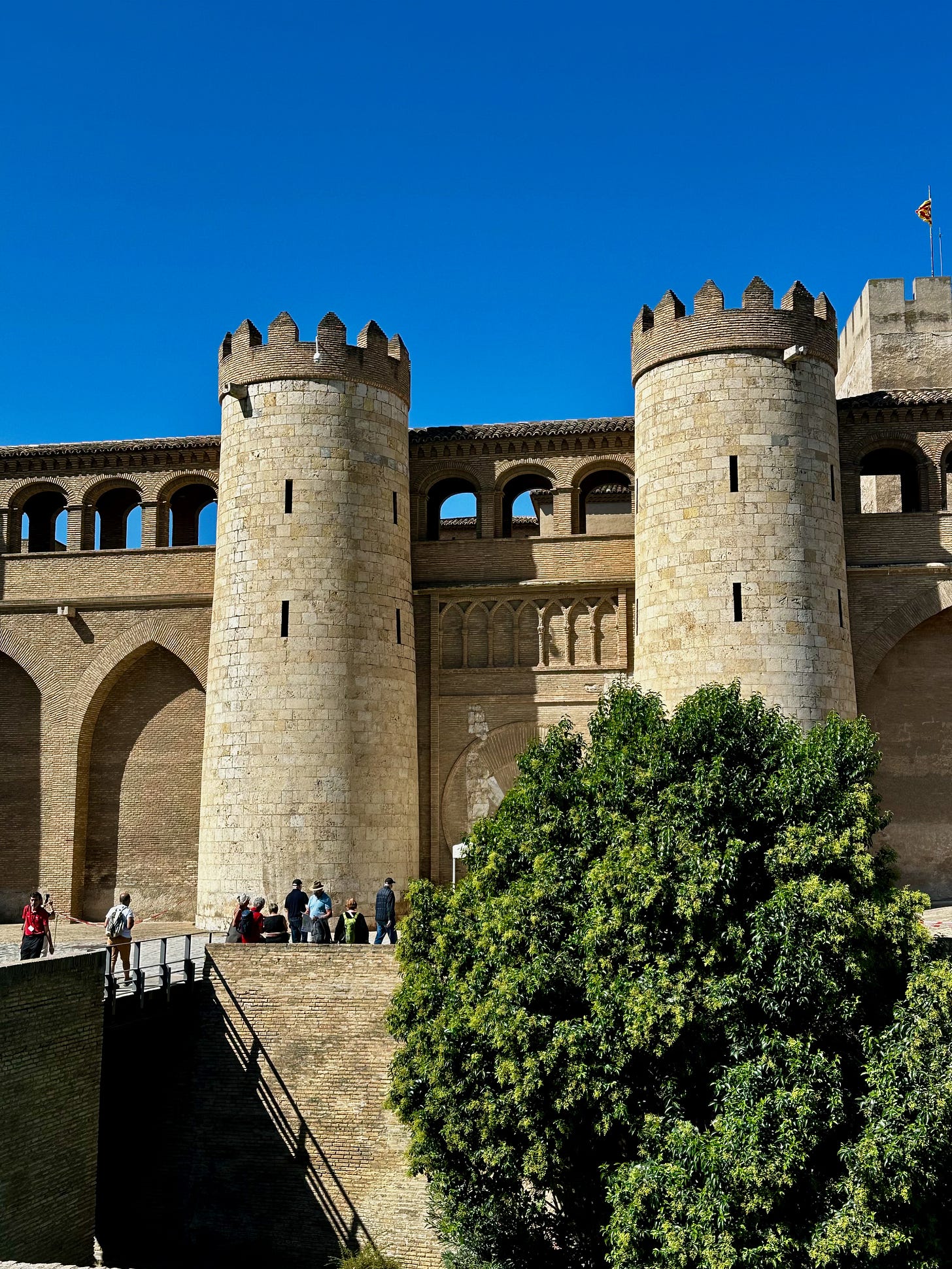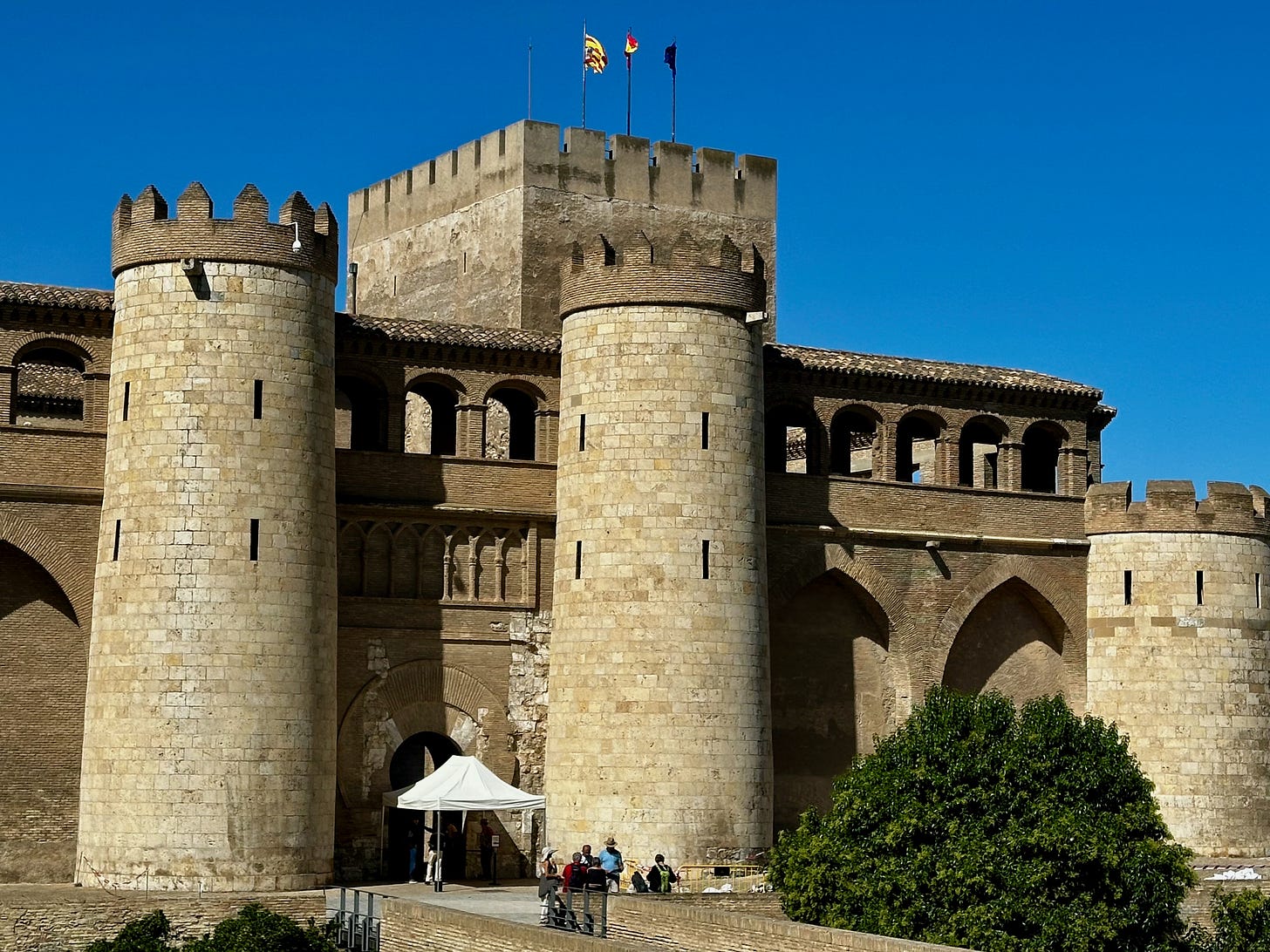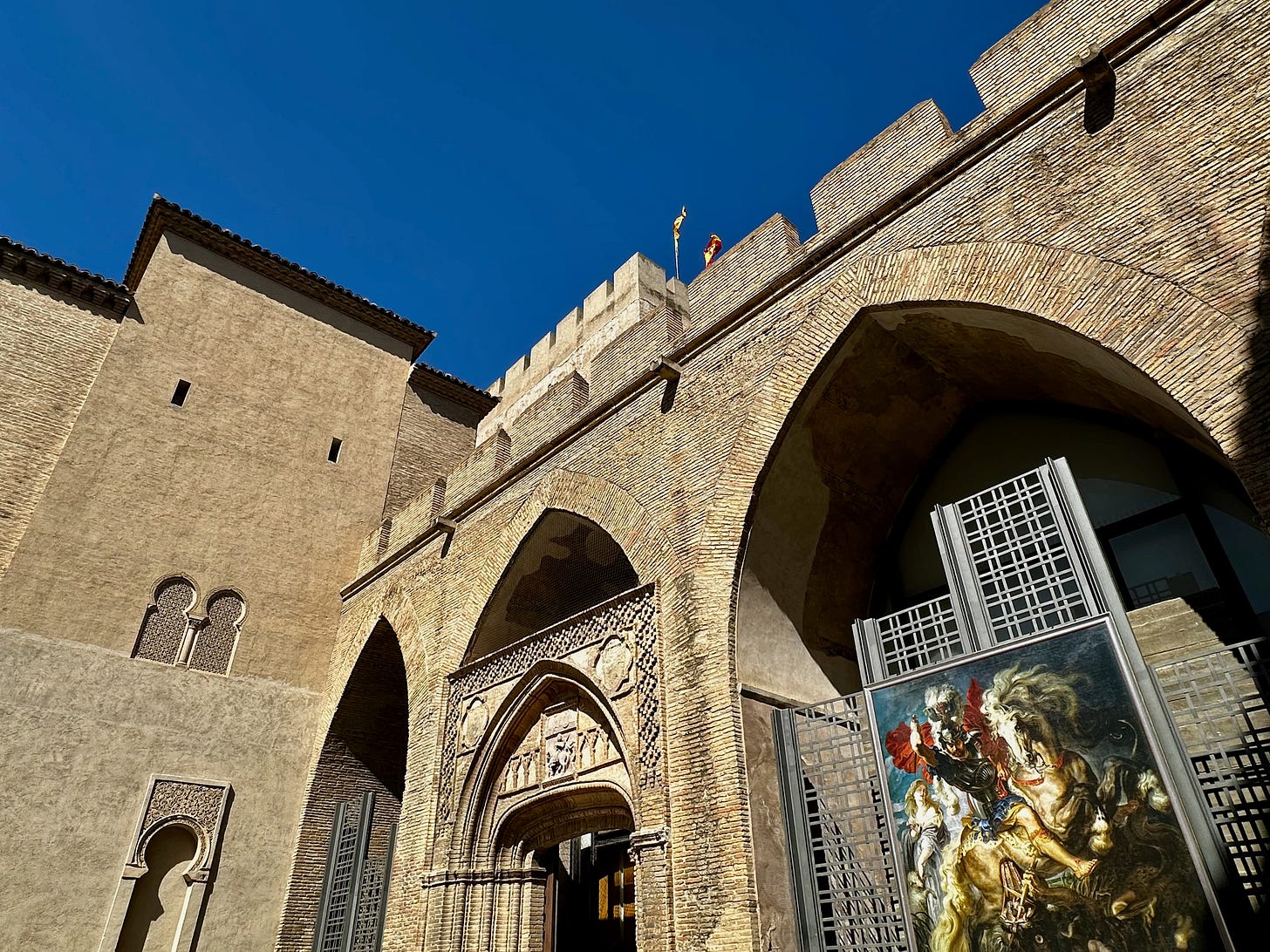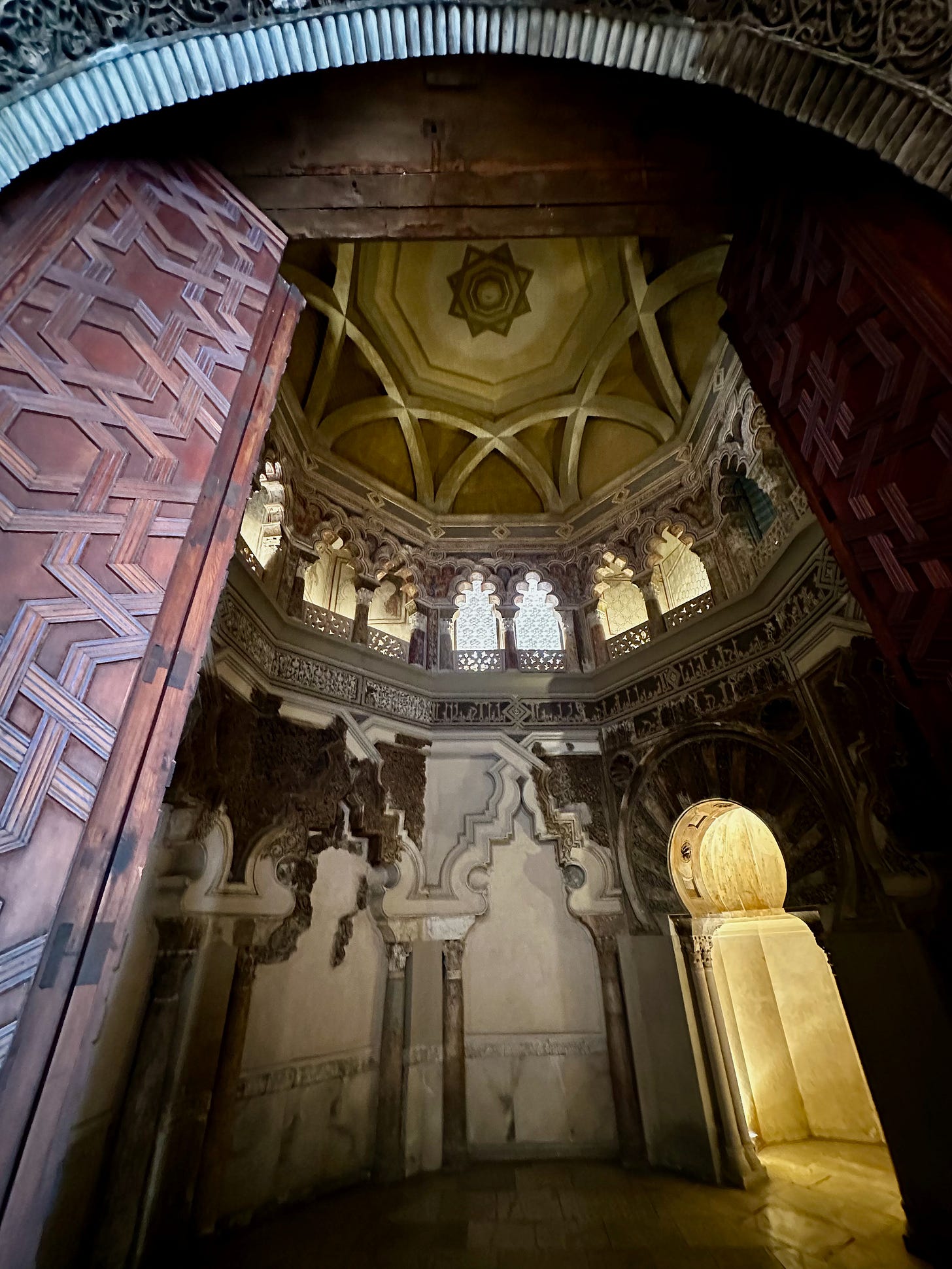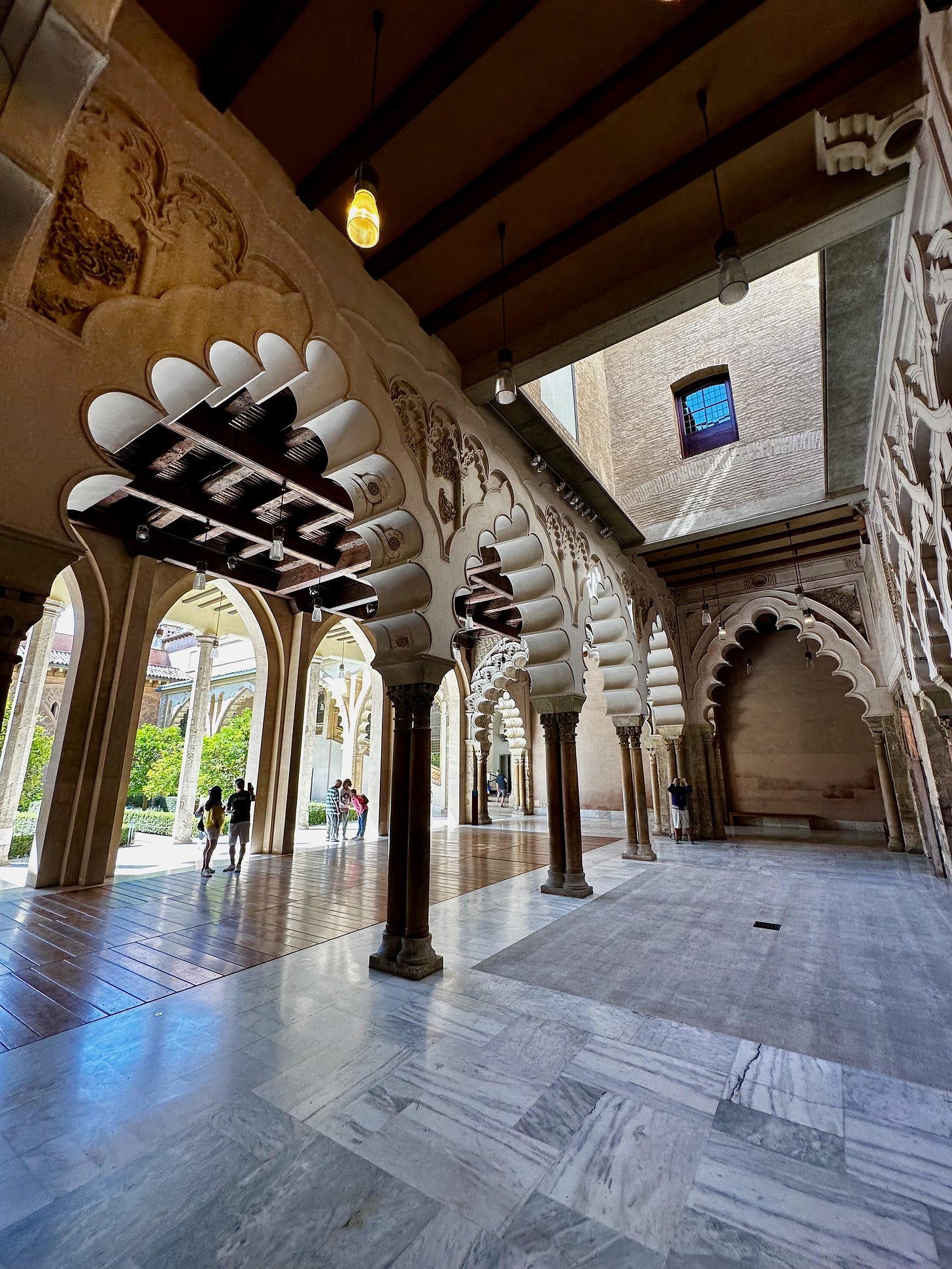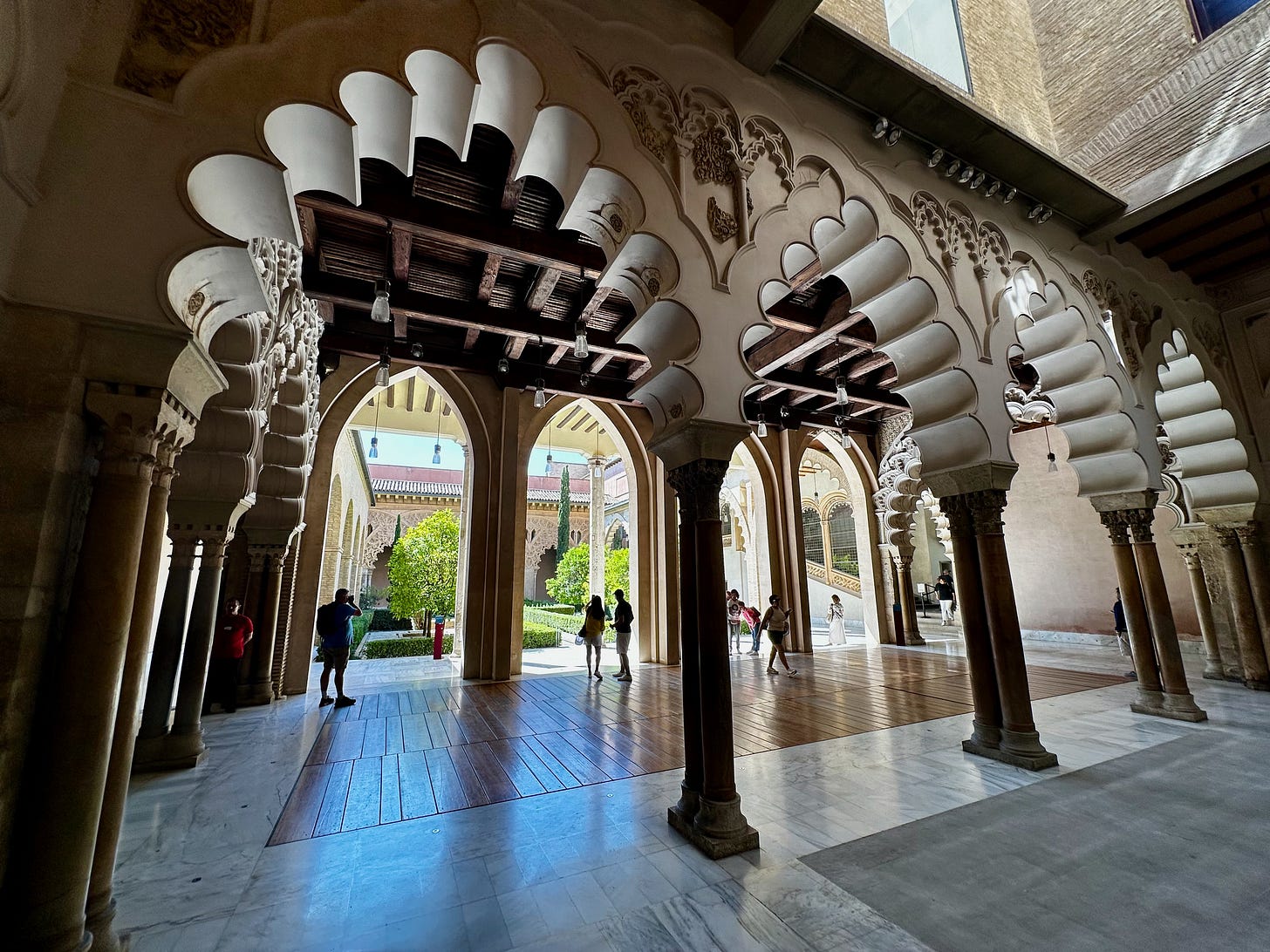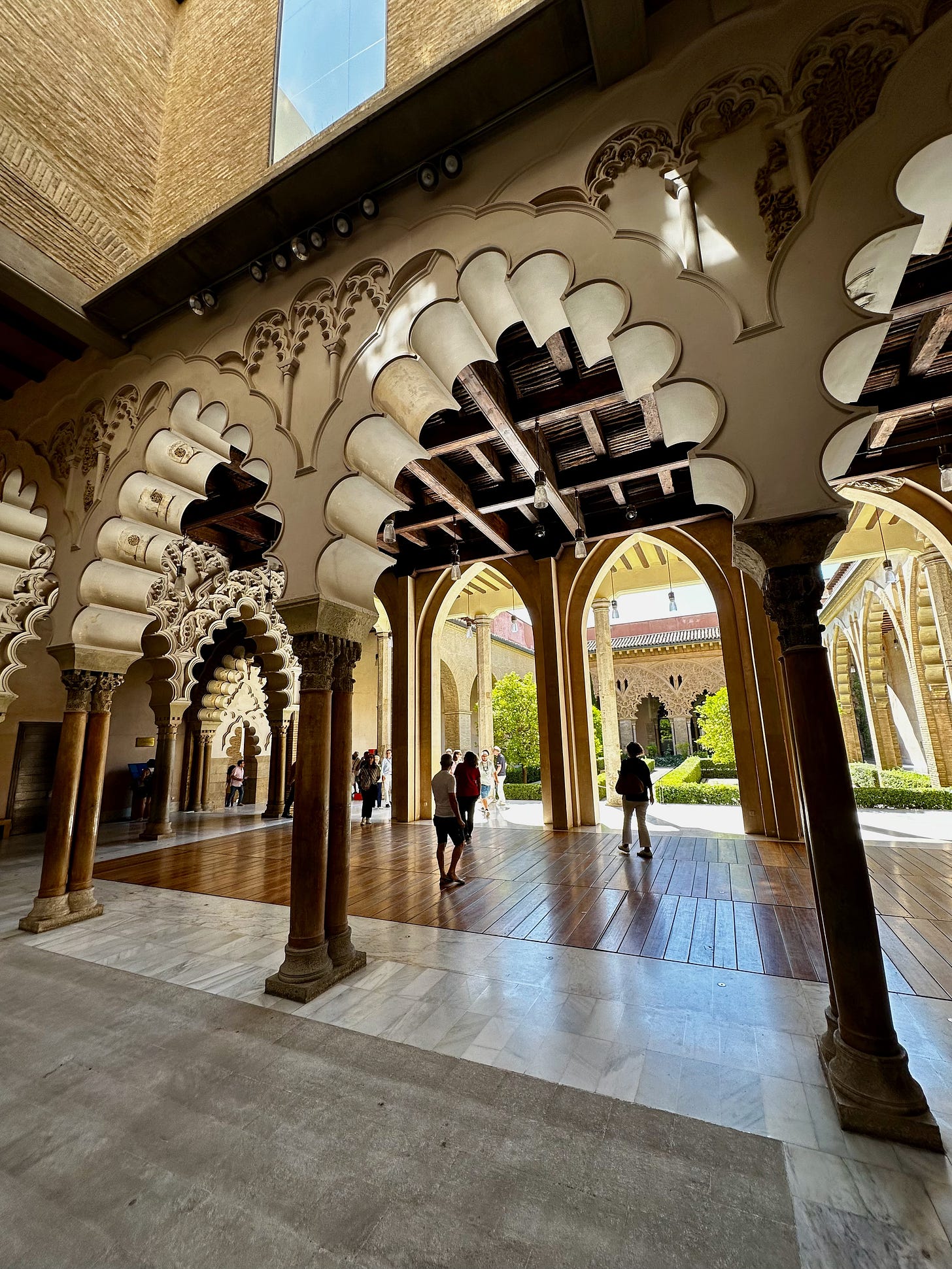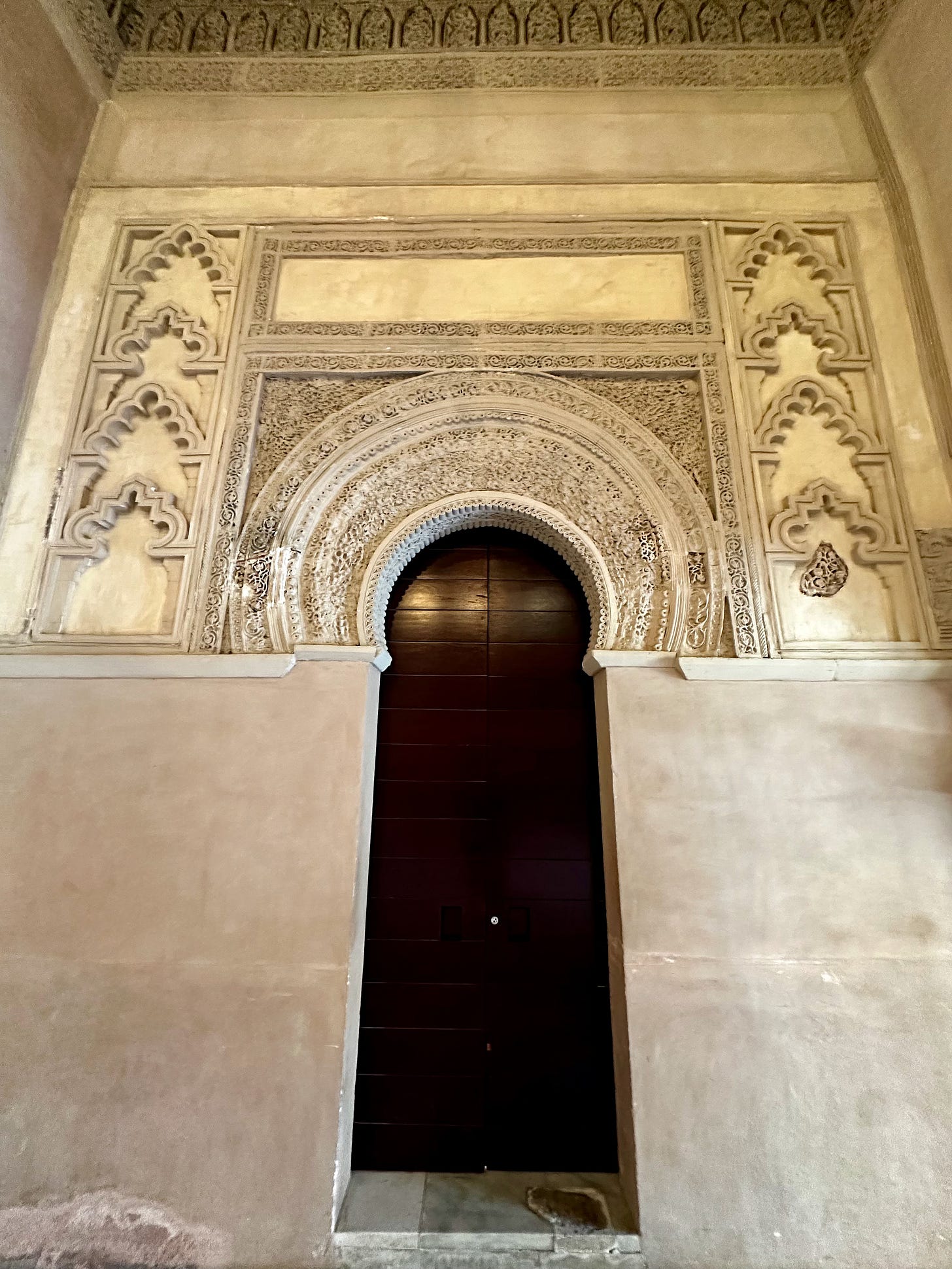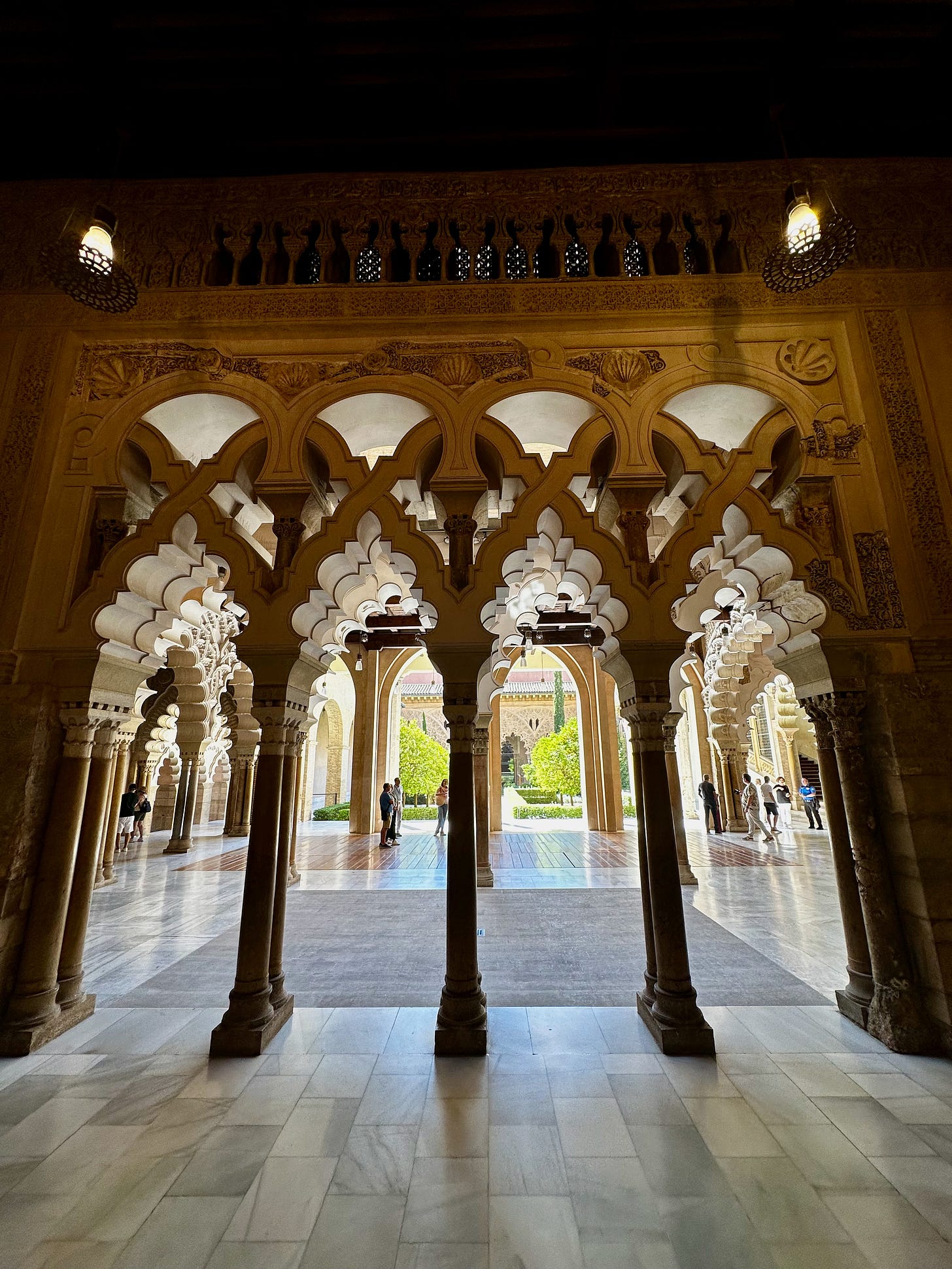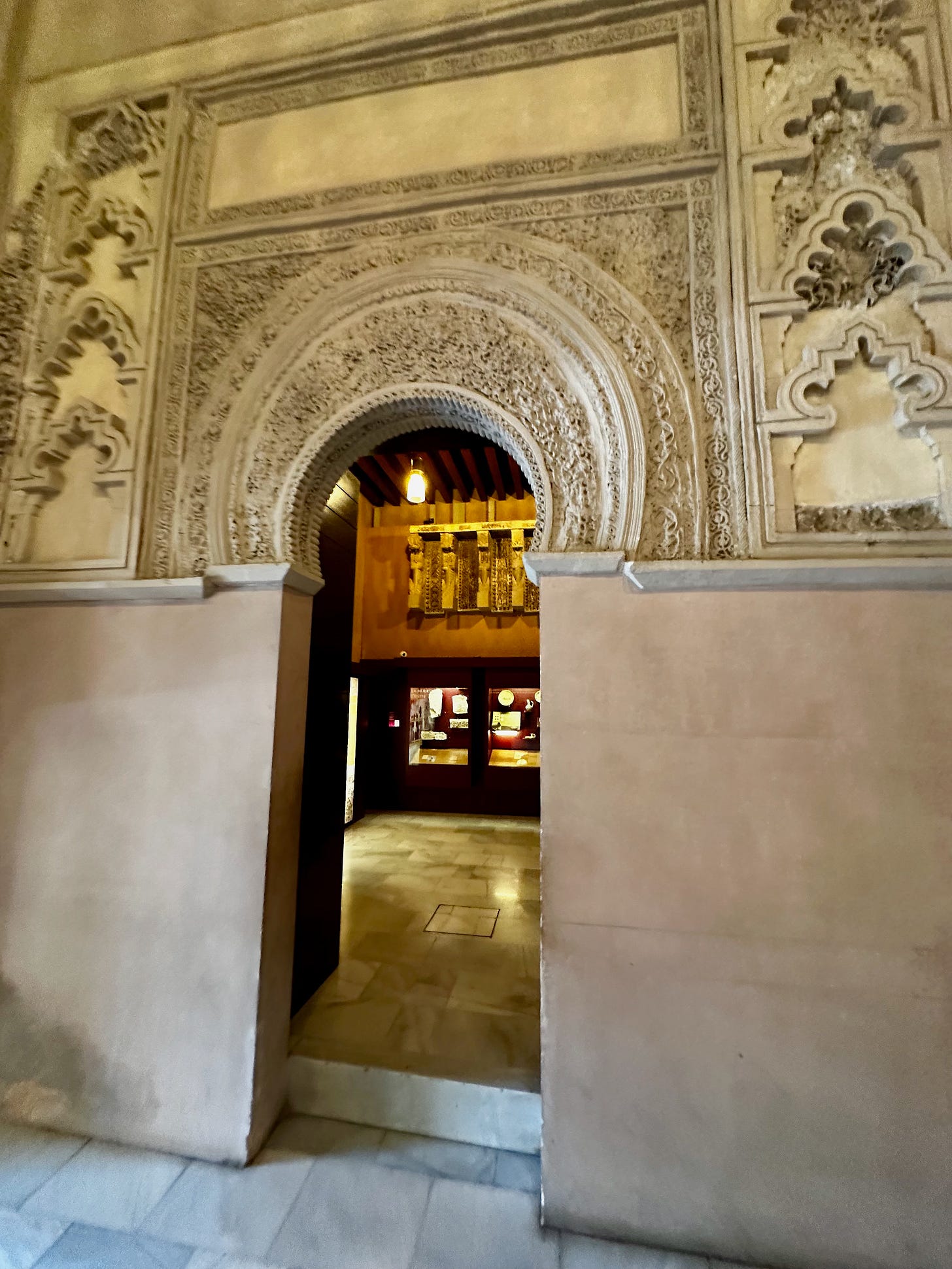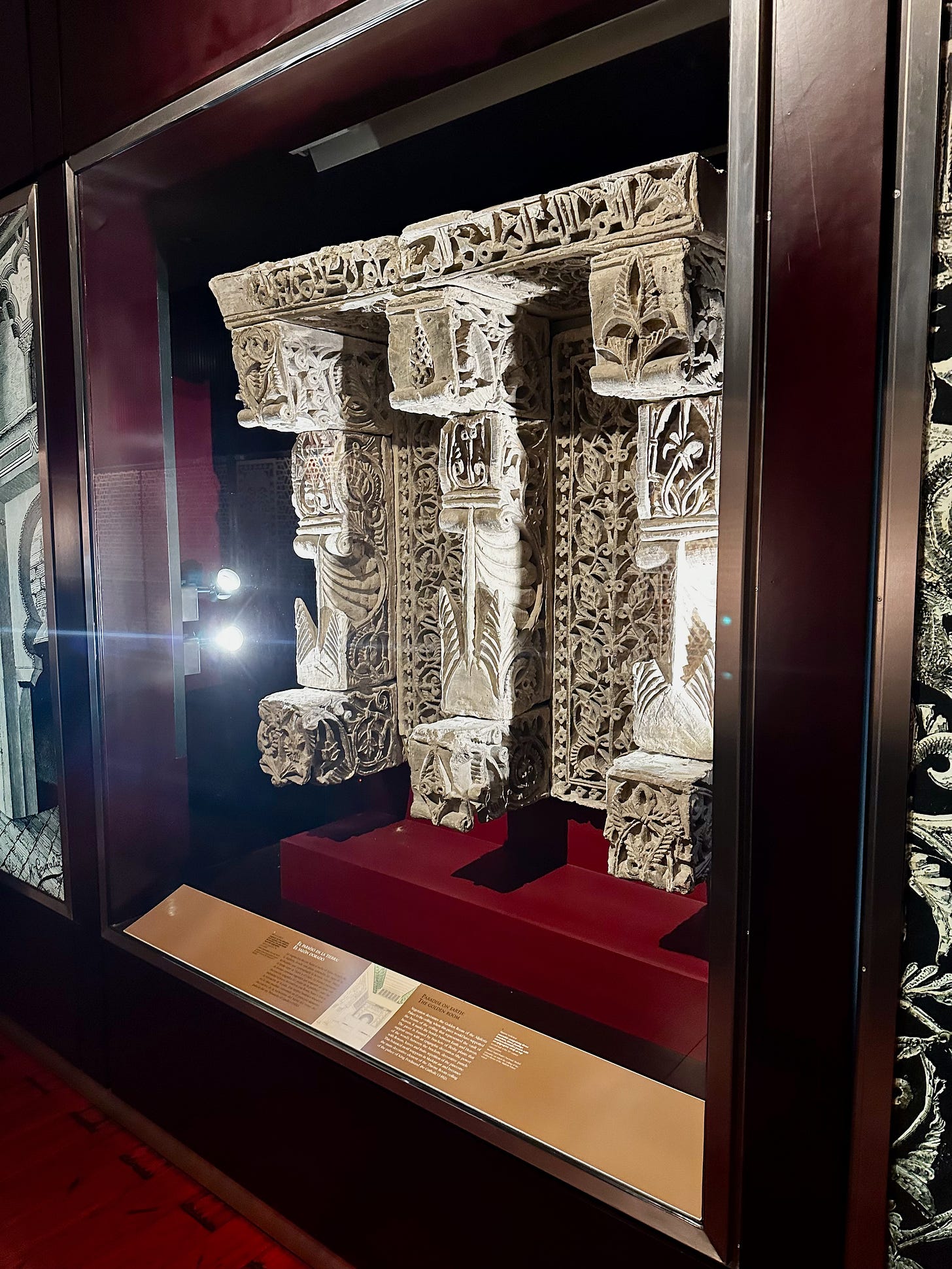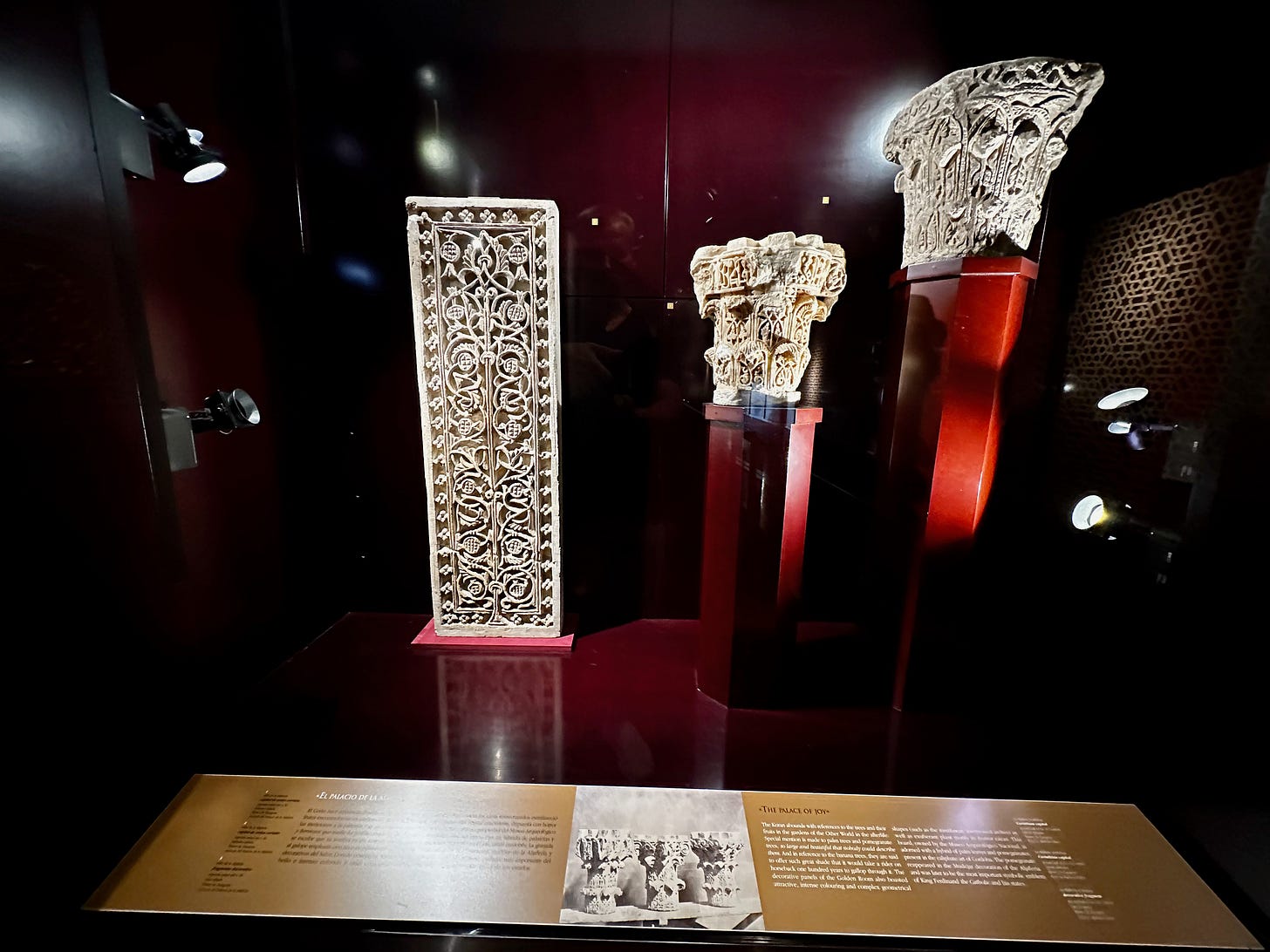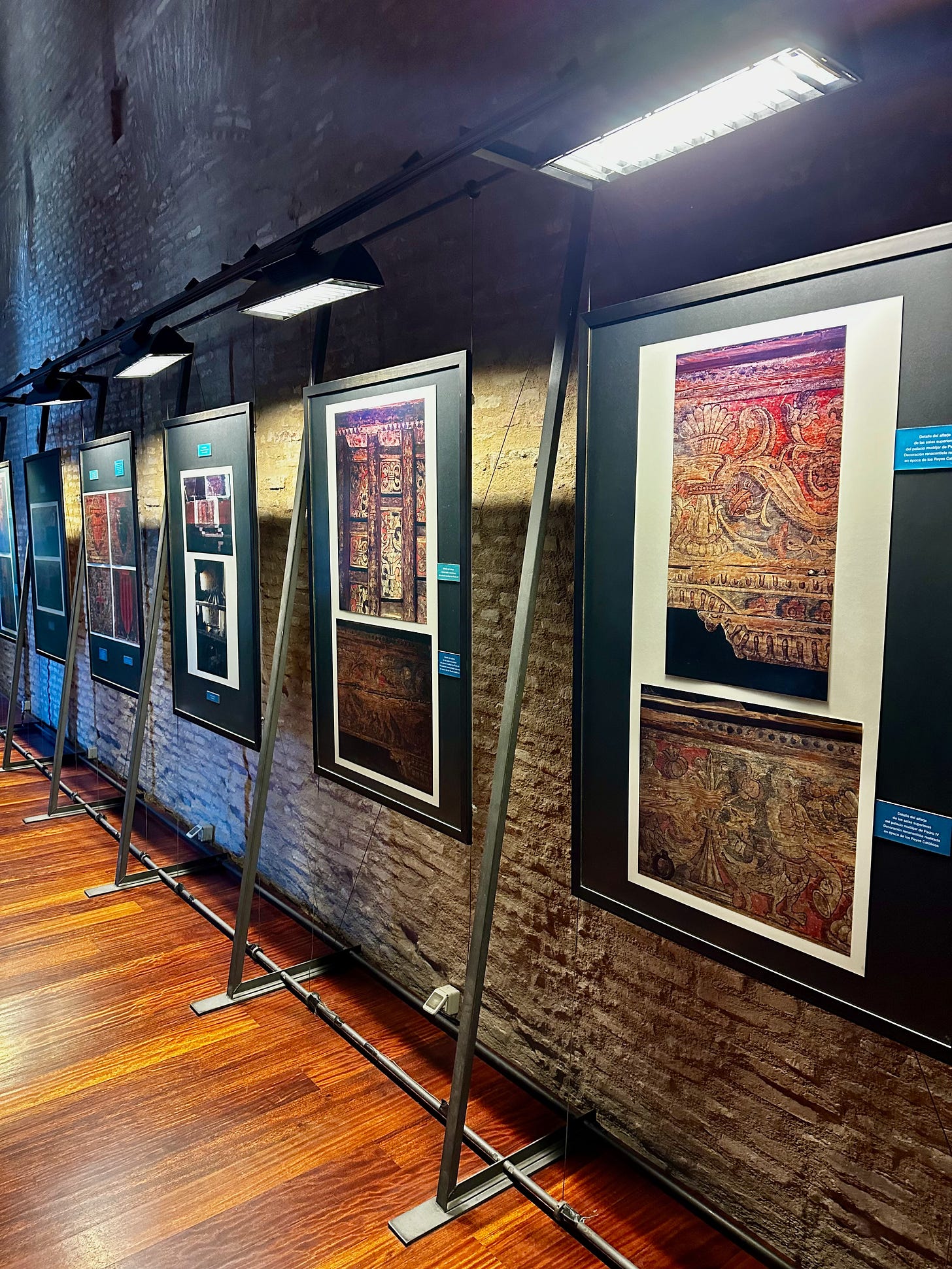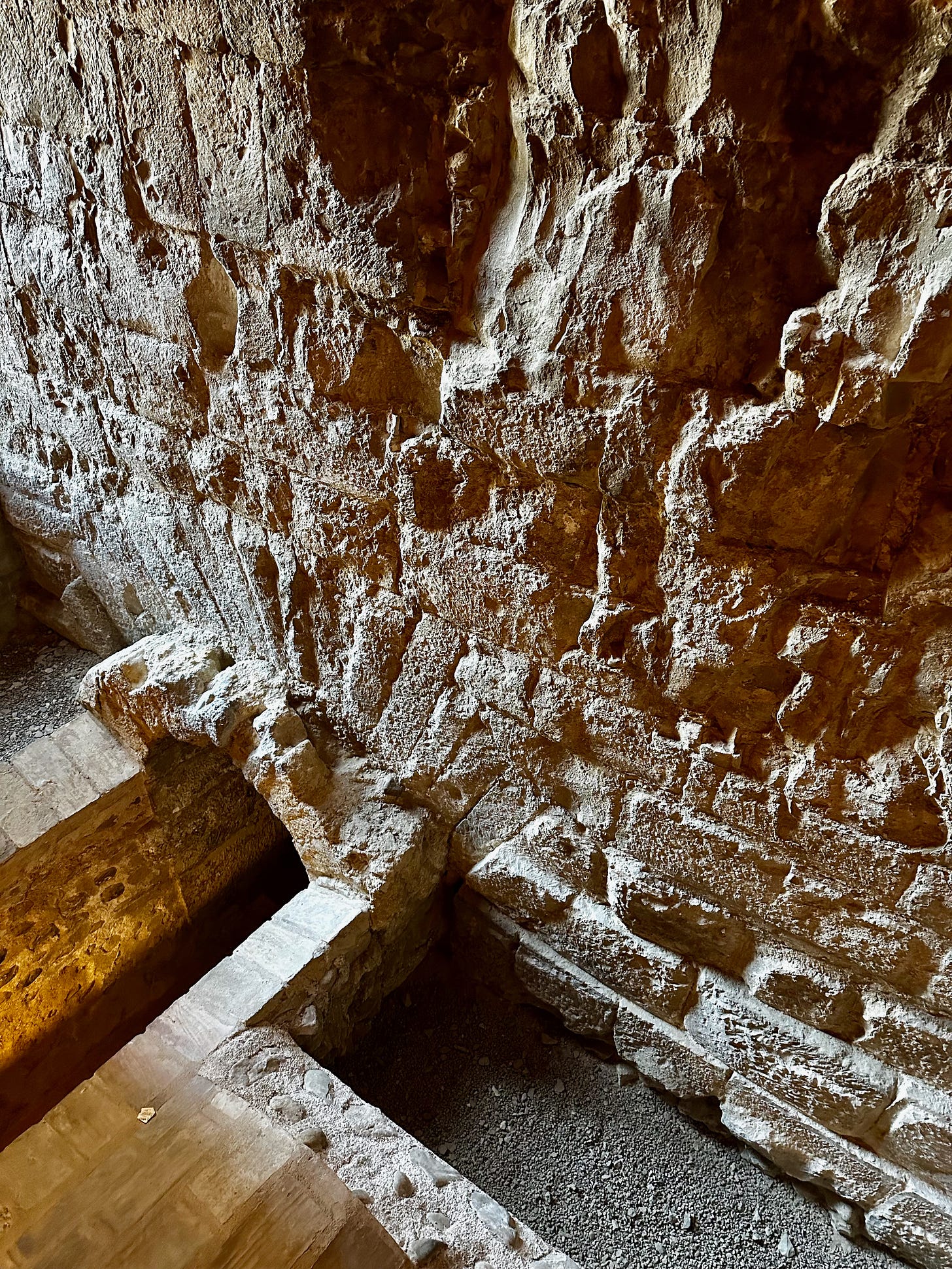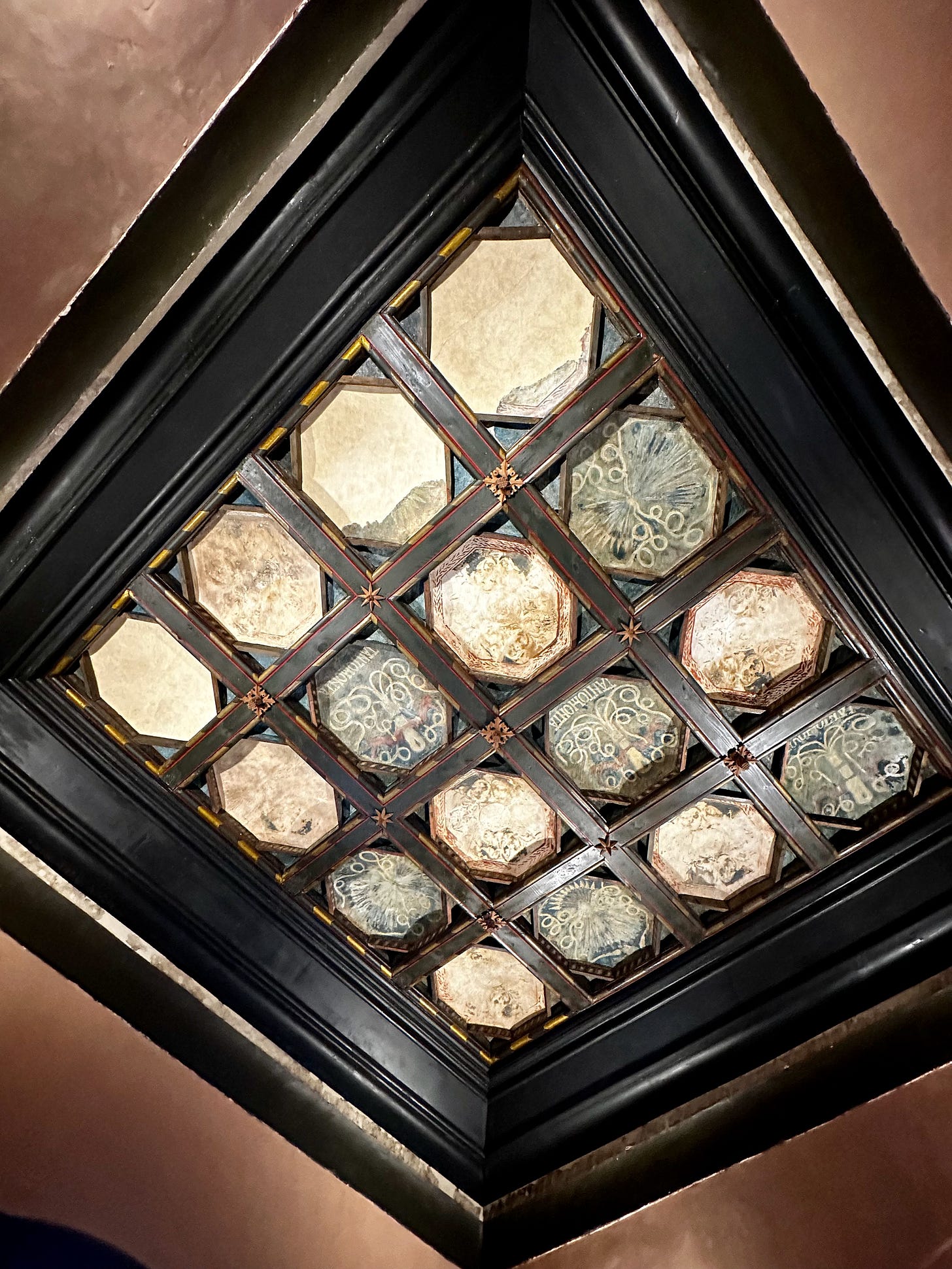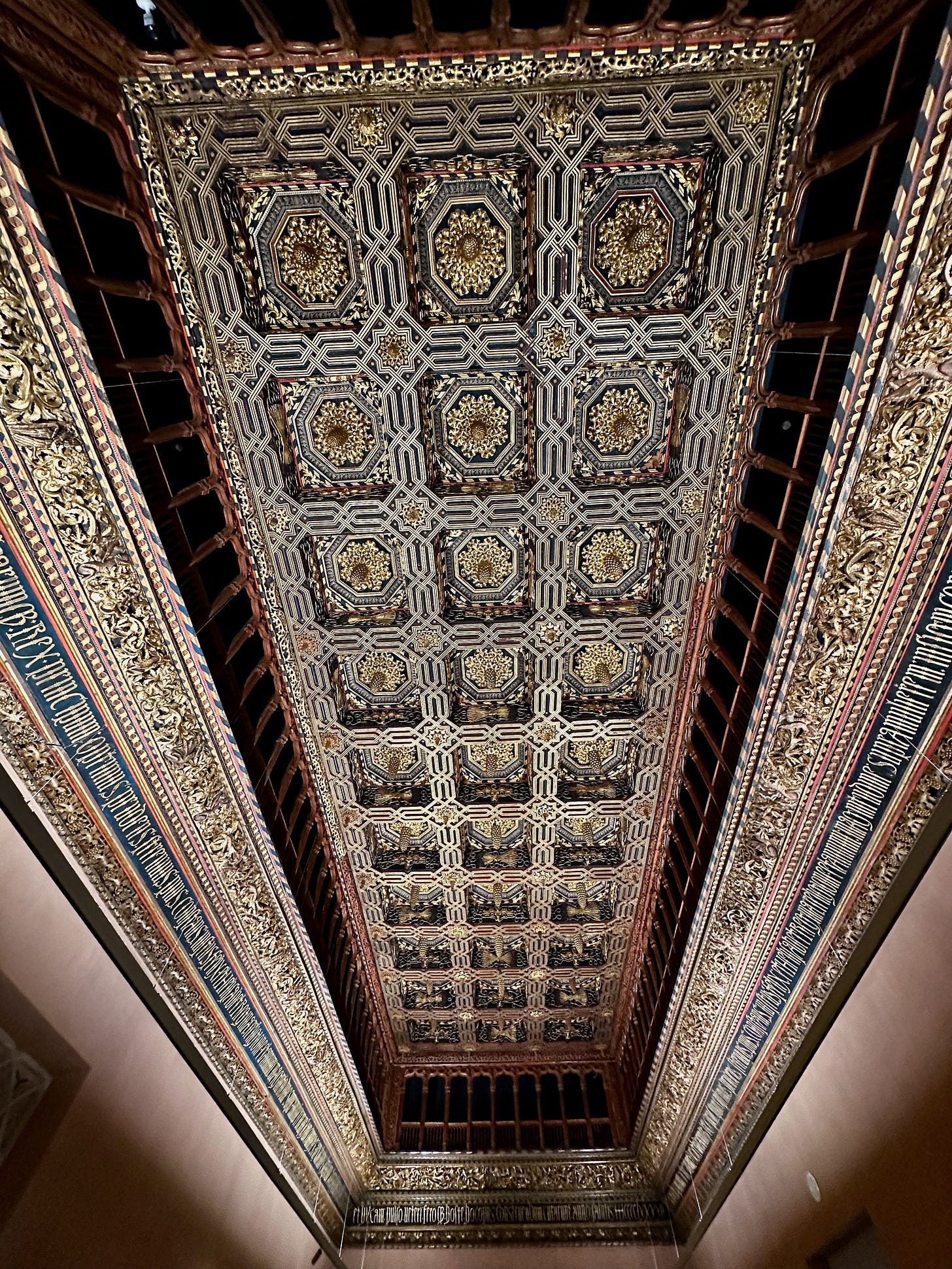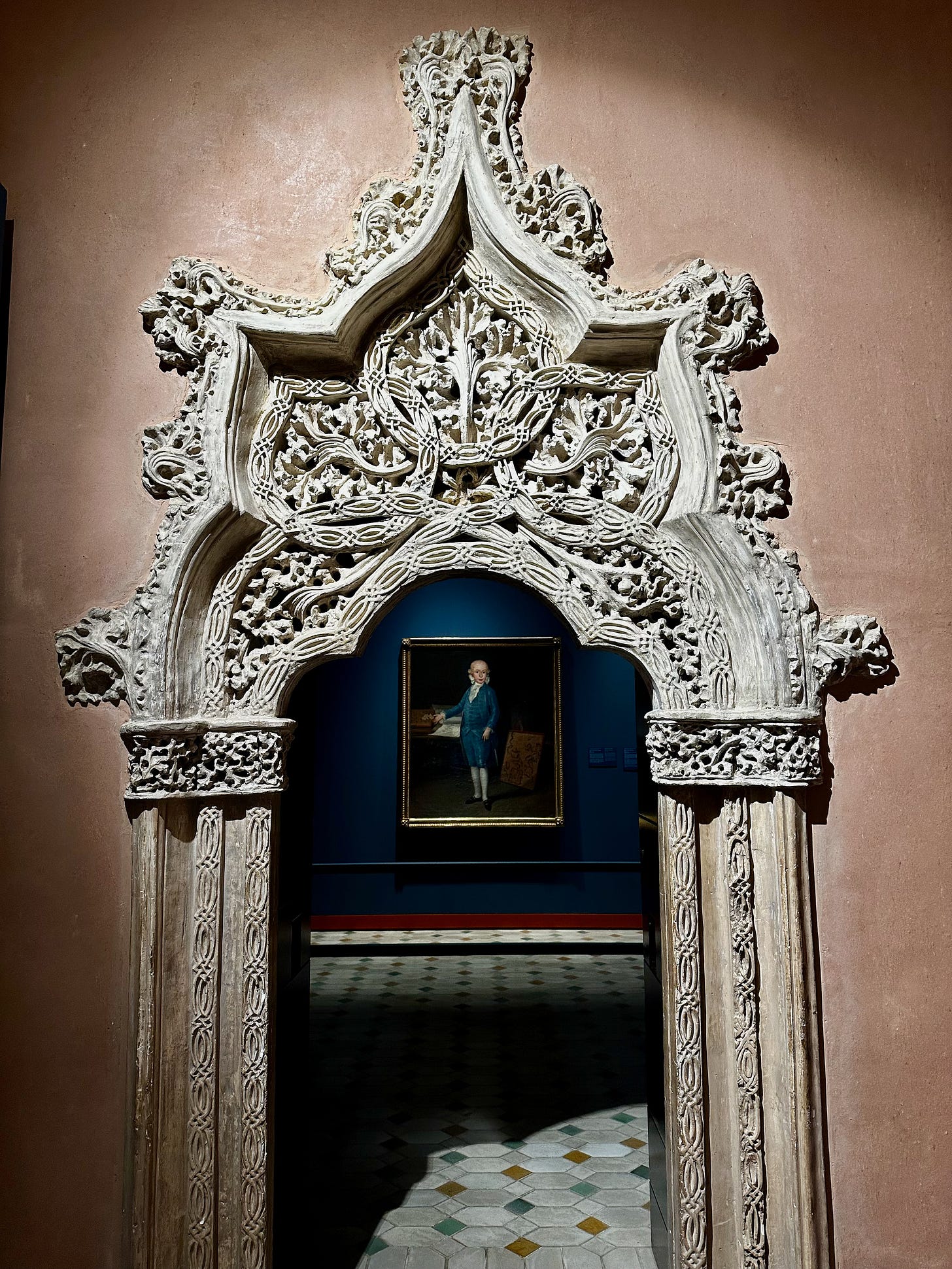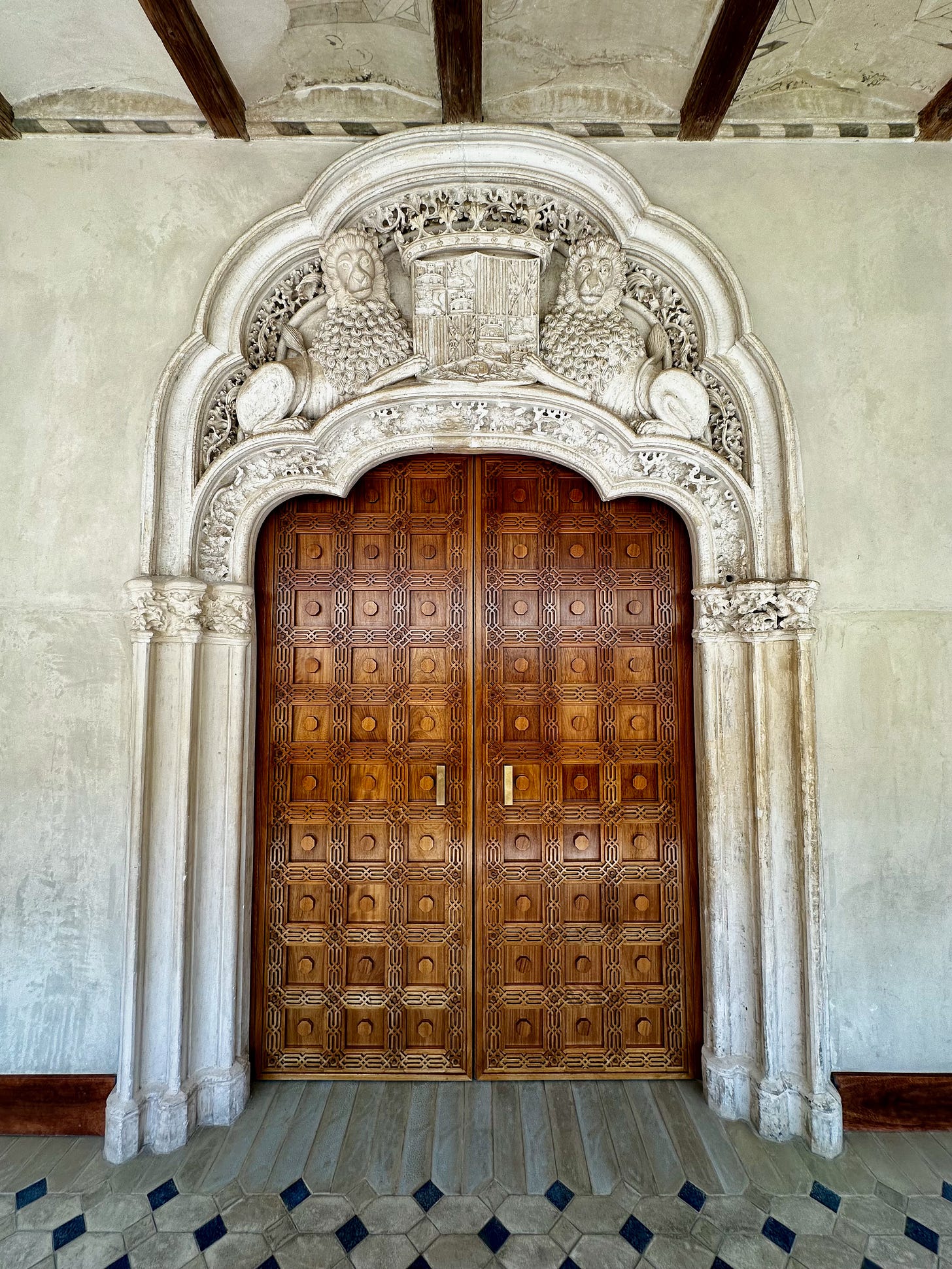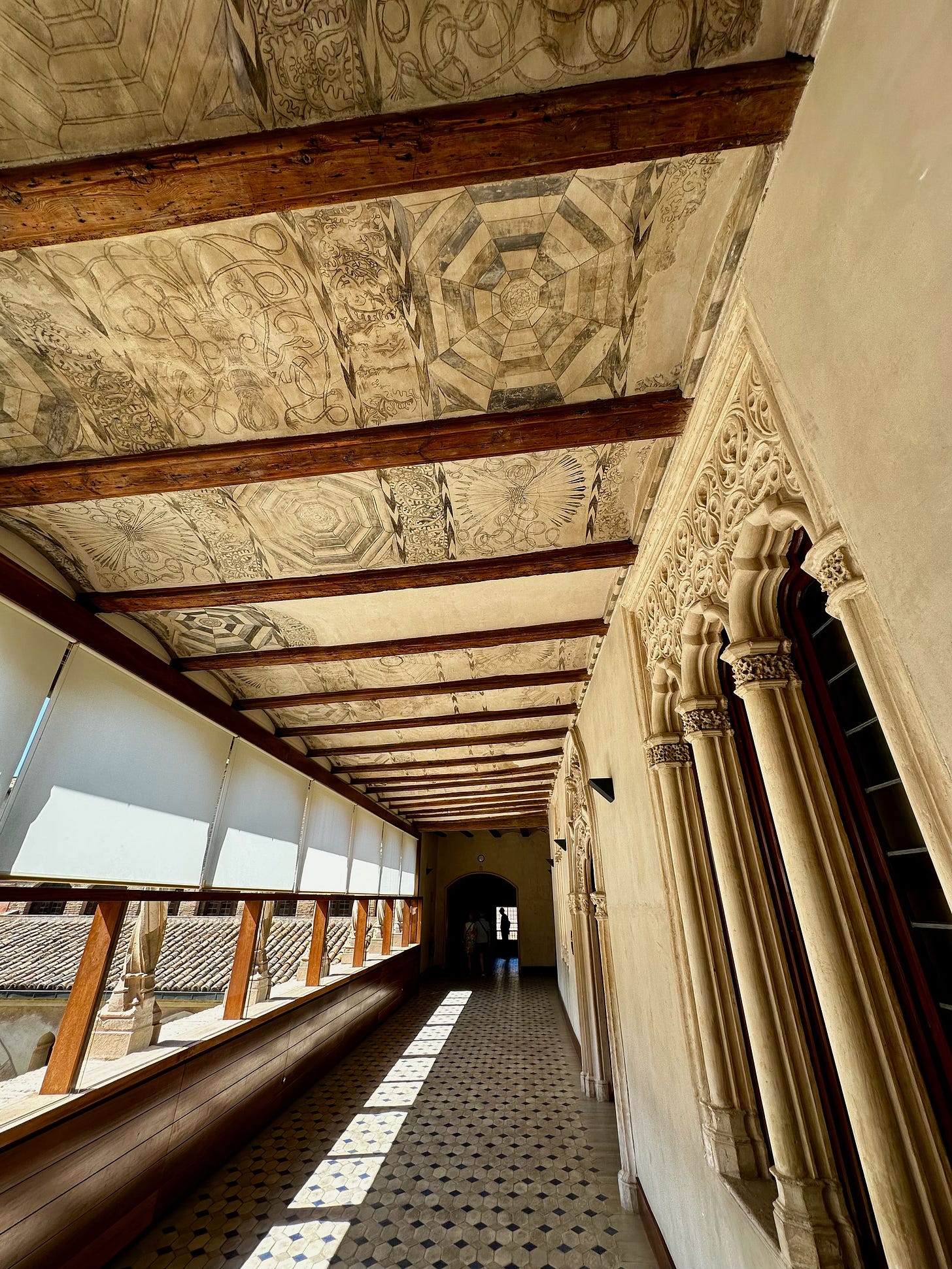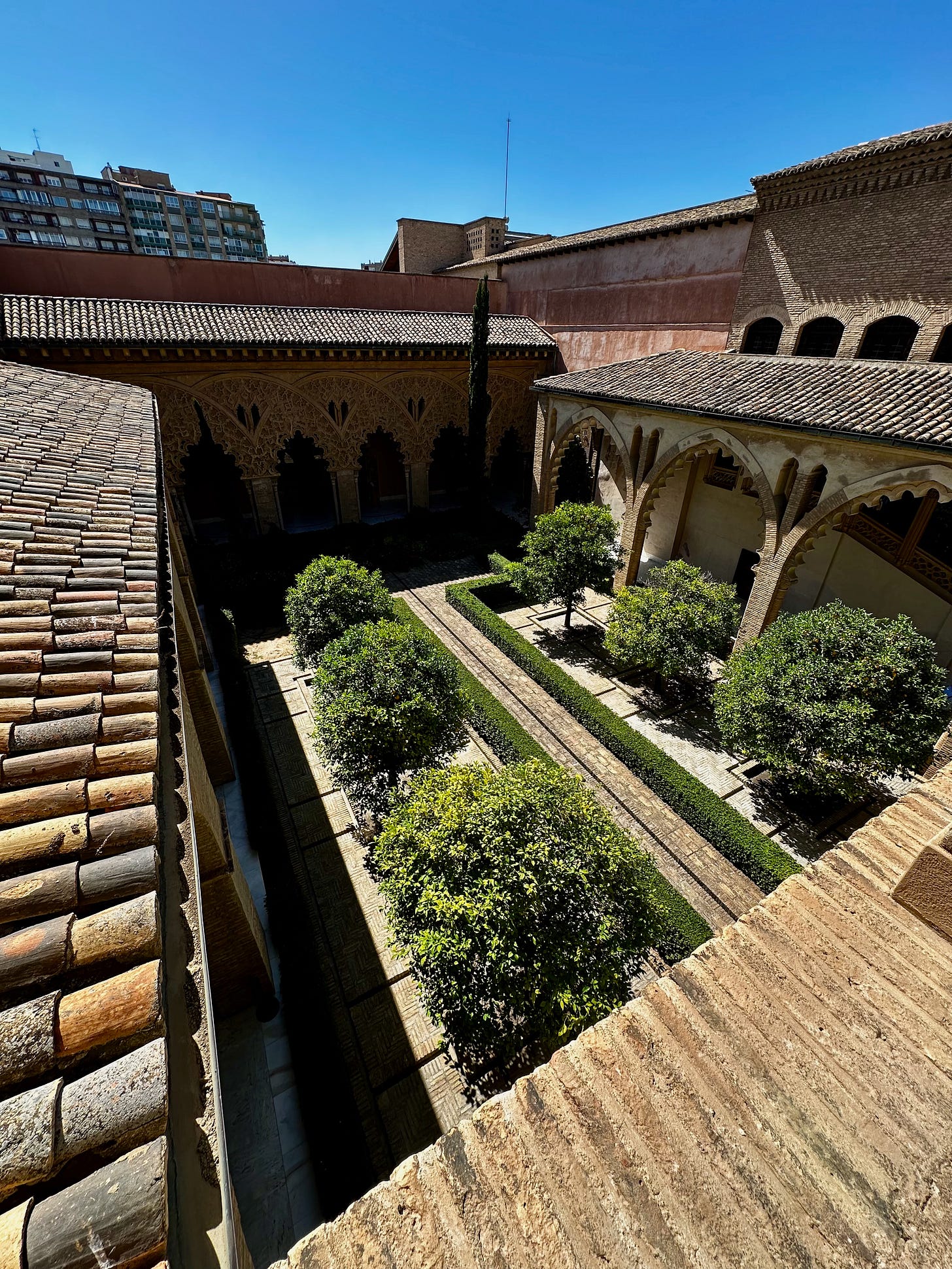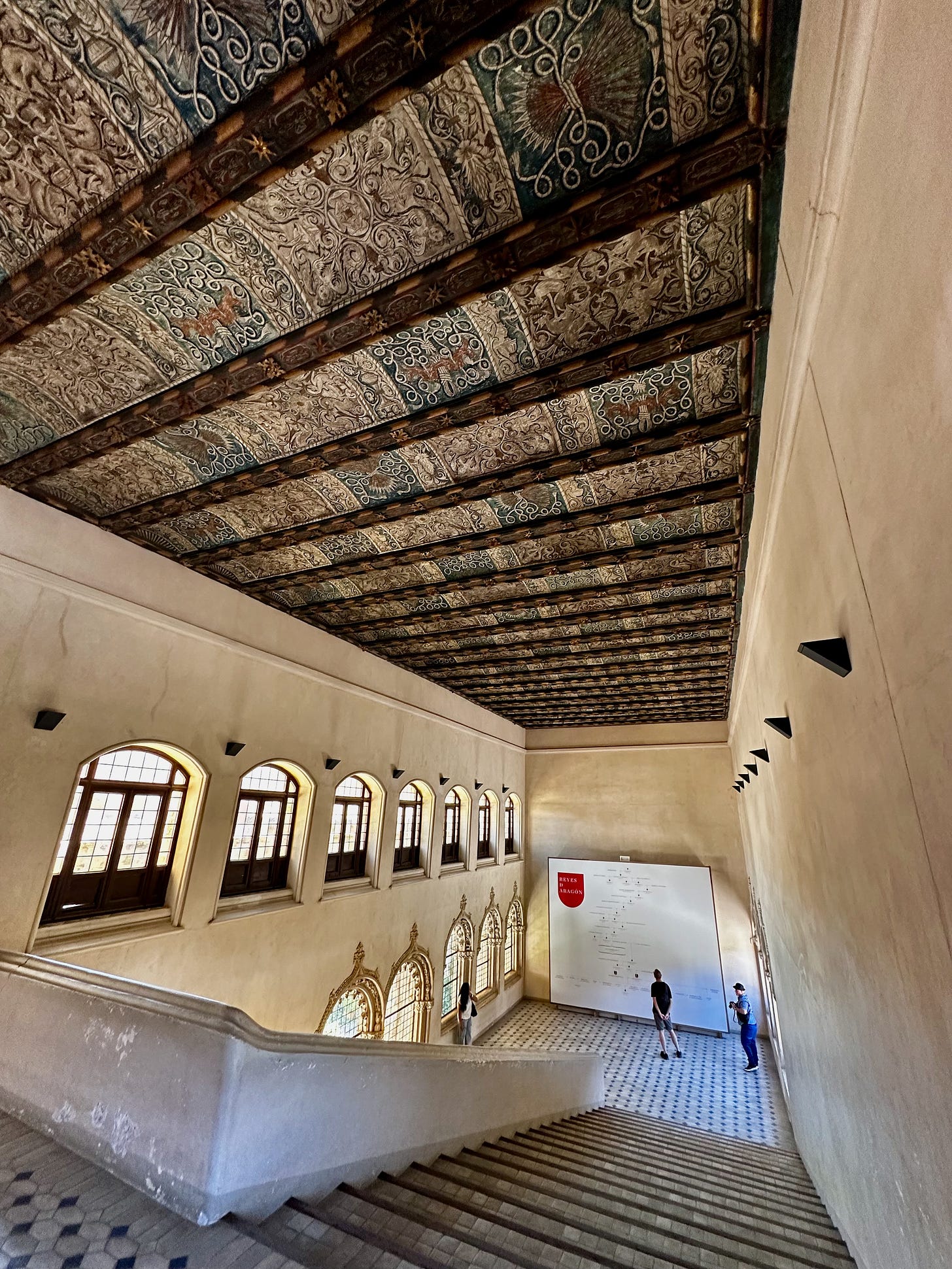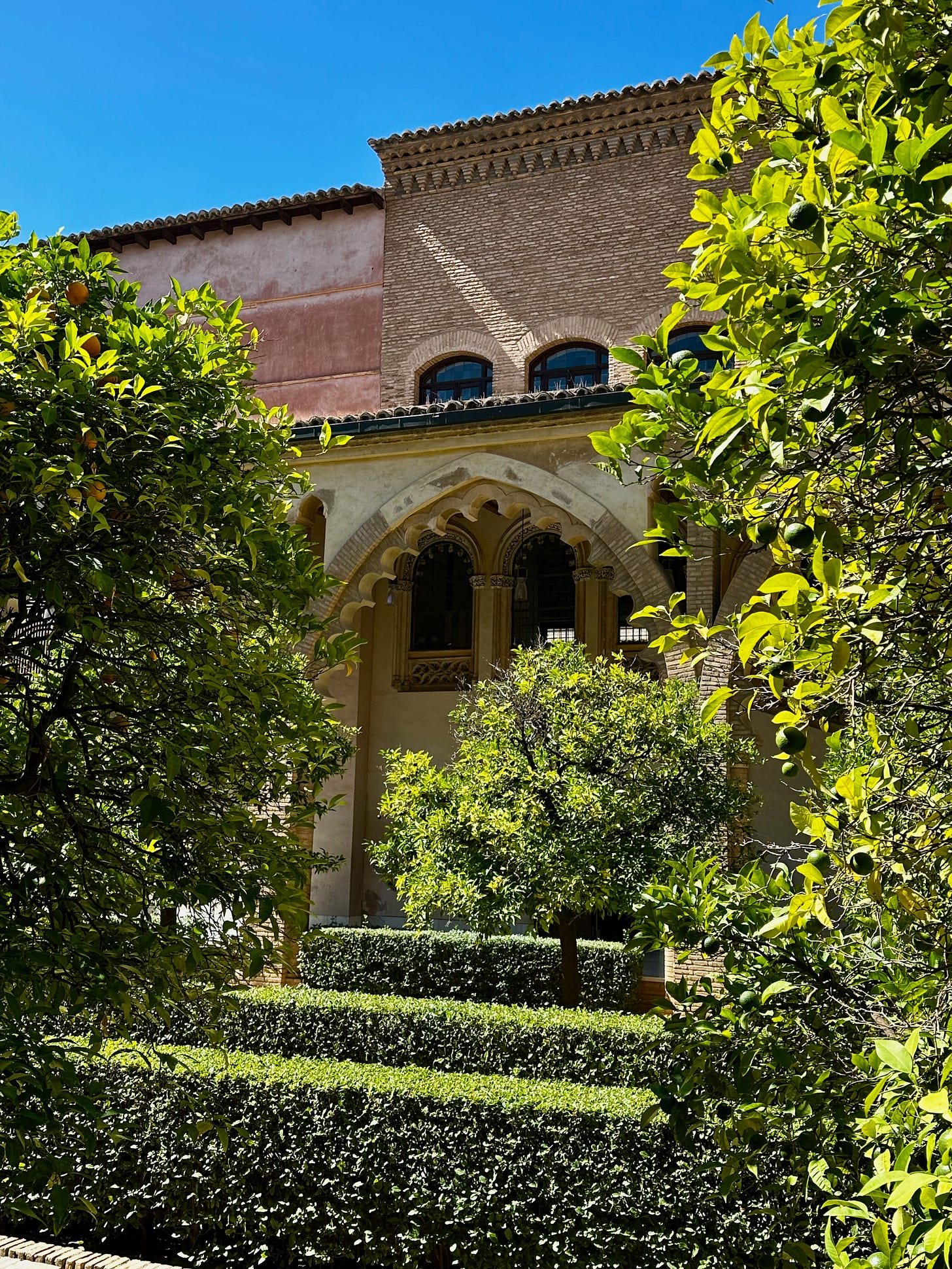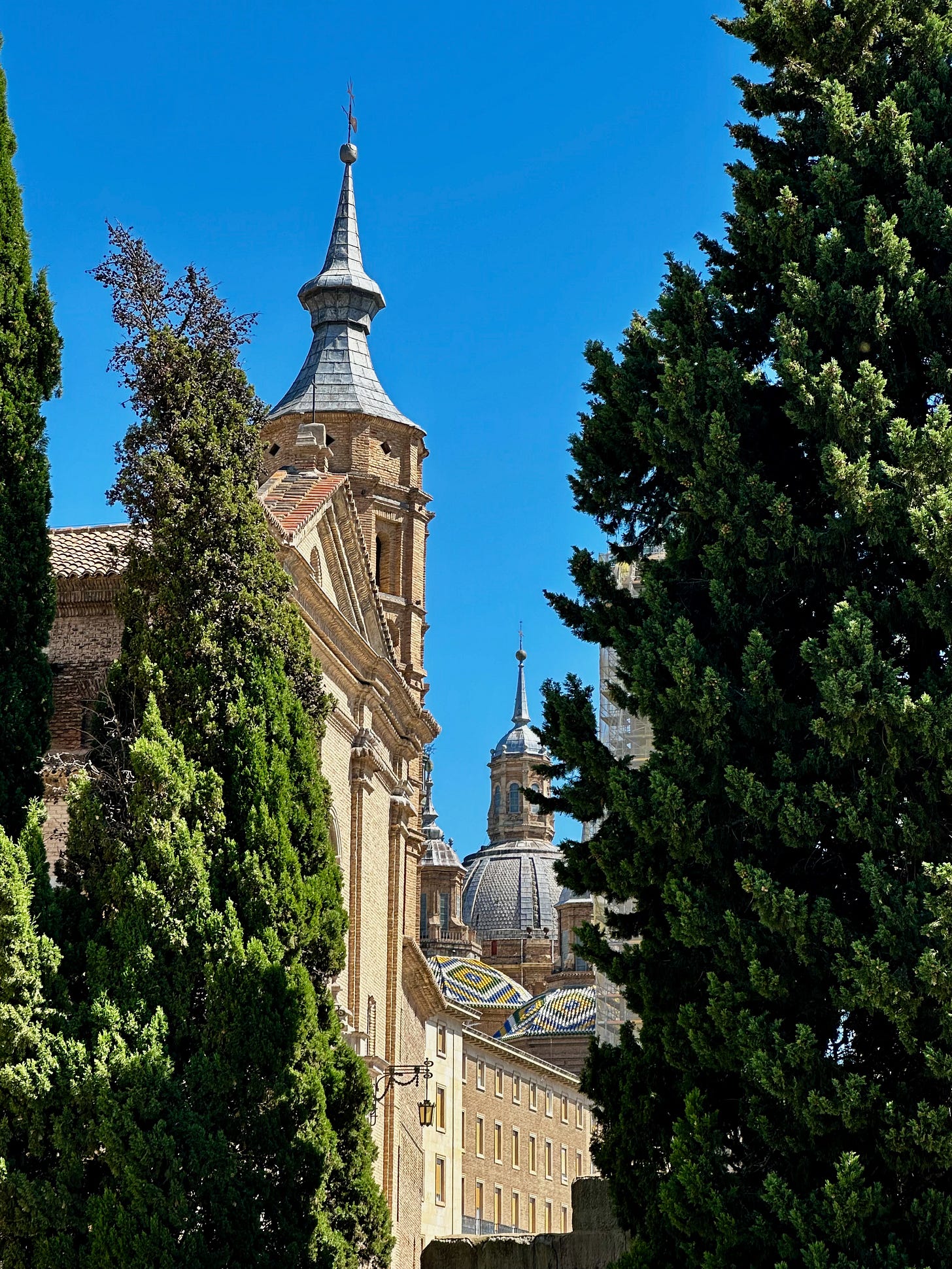One Day in Zaragoza: Moorish Palaces, Baroque Basilicas, and Getting Lost with Tapas
History, food, and high-speed trains — from Barcelona to Zaragoza and back in a day.
If you want to feel smug about living in Spain, buy yourself a ticket on a high-speed train. Few things say “civilisation” like hurtling across the countryside at 300 km/h, cappuccino in hand, while the rest of the world still argues about airport security queues.
That was my plan, anyway. I boarded the Renfe AVE in Barcelona at a heroic hour of the morning, ready for the advertised two-hour dash to Zaragoza. I’d pictured myself gliding into town with the elegance of a 21st-century adventurer. Instead, the train sat stubbornly still on the tracks while a mysterious “technical issue” was announced. Cue forty-five minutes of staring at my reflection in the window and wondering whether Zaragoza might have to wait for another lifetime.
Eventually, the train creaked into action, and once it gathered speed, I forgave everything. The Catalan countryside blurred into Aragonese plains, and two and three-quarter hours after leaving Barcelona, I stepped off at Zaragoza-Delicias Station — a gleaming, oversized slab of modern architecture that looked like it had been built for intergalactic space shuttles rather than mere trains. The day was mine, delayed but not diminished.
When in doubt, start with a palace. And not just any palace, but the Aljafería Palace, Zaragoza’s jewel of Islamic architecture. Built in the 11th century by the taifa kings of Zaragoza, the Aljafería wasn’t designed as some dour fortress. This was a pleasure palace — a place of gardens, arcades, and poetic inscriptions, designed to show off the sophistication of the Muslim rulers who flourished here long after Córdoba’s glory had dimmed.
Walking through its horseshoe arches and stuccoed walls, I half-expected to find Scheherazade perched in the corner, spinning stories from The Arabian Nights. Yet the Aljafería isn’t frozen in the Islamic period. After Ferdinand and Isabella conquered Zaragoza, they couldn’t resist stamping their authority on the palace. The Catholic Monarchs carved out their own quarters in the 15th century, and later, Renaissance and even military elements were incorporated. Today, the building has a final twist: it’s the seat of the Aragonese Parliament.
Standing in the courtyard, I thought: if only modern parliaments came with this level of flair. Imagine politicians debating policy under intricately carved Islamic arches. Maybe they’d behave better.
Leaving the palace, I walked toward Plaza del Pilar, Zaragoza’s grand central square. If the Aljafería whispers of the city’s Islamic past, Plaza del Pilar screams Catholic Spain at full volume. The square is enormous — the kind of place where festivals, protests, and casual strolls all seem equally at home.



